2018: A Groundbreaking Year for Narcolepsy Research & Drug Development
“We are witnessing a revolution of our understanding of narcolepsy.”
– Dr. Emmanuel Mignot, M.D. Ph.D.,
Director of the Center for Sleep Sciences and Medicine, Stanford University
2018 was an exciting year for narcolepsy research and drug development. Here’s my top six research highlights of 2018 that you should know about!
1. Narcolepsy & the immune system
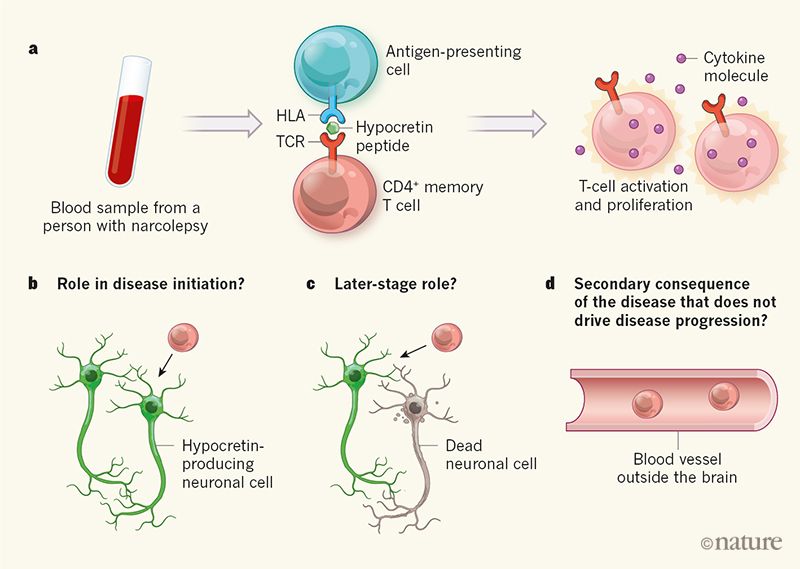
Photo Source: Nature
This fall, two new publications offered key insights into the biological underpinnings of type 1 narcolepsy with cataplexy. These findings could lead to new diagnostic procedures and preventive strategies in the future.
In September, Latorre and colleagues’ ground-breaking Nature publication indicated that particular immune cells (called T cells) may be involved in the attack on hypocretin/orexin neurons in type 1 narcolepsy. These findings further the leading theory that narcolepsy may be an “autoimmune condition.” (Here’s a great lay-friendly summary.)
In December, Luo and the Stanford University group’s publication in the Proceedings of the National Academy of Sciences offered interesting complimentary findings, suggesting that these immune cells may mistakingly attack hypocretin/orexin neurons that “resemble” certain pieces of flu virus. The research is more complex and exciting than my brief summary, I recommend Dr. Emmanuel Mignot’s recent Thrive Global article to learn more.
2. Classifying type 2 narcolepsy without cataplexy
Ruoff and colleagues’ Journal of Clinical Sleep Medicine publication raised important awareness about the challenges in classifying and diagnosing type 2 narcolepsy without cataplexy (NT2). The study indicated that repeating the MSLT (the daytime portion of the 24-hour sleep study) led to inconsistent results for narcolepsy type 2 cases, changing to idiophathic hypersomnia 26% of the time, or to a negative MSLT 57% of the time.
This is not a good situation, but researchers are starting to use “big data” and “machine learning” to re-examine how we might better cluster and separate narcolepsy and IH cases by key characteristics and measurements. See Zhang’s Nature publication. Important discussions are underway and I believe this will be an evolving space in the coming years. For those facing a diagnosis “in between NT2 or IH,” please remember your experience is real and you are part of our community, no matter what label your doctor uses.
3. Understanding the brain circuits of cataplexy
Researchers are making progress in identifying the specific pathways in the brain underlying cataplexy, the unique muscle weakness experienced by people with type 1 narcolepsy. Here are some key 2018 publications:
- Melanin-concentrating hormone neurons contribute to dysregulation of rapid eye movement sleep in narcolepsy. Naganuma F, Bandaru SS, Absi G, Mahoney CE, Scammell TE, Vetrivelan R. Neurobiol Dis. 2018 Dec;120:12-20.
- Serotonin neurons in the dorsal raphe mediate the anticataplectic action of orexin neurons by reducing amygdala activity.Hasegawa E, Maejima T, Yoshida T, Masseck OA, Herlitze S, Yoshioka M, Sakurai T, Mieda M. Proc Natl Acad Sci U S A. 2017 Apr 25;114(17):E3526-E3535.
- GABAergic Neurons of the Central Amygdala Promote Cataplexy. Mahoney CE, Agostinelli LJ, Brooks JN, Lowell BB, Scammell TE. J Neurosci. 2017 Apr 12;37(15):3995-4006.
- GABA Cells in the Central Nucleus of the Amygdala Promote Cataplexy. Snow MB, Fraigne JJ, Thibault-Messier G, Chuen VL, Thomasian A, Horner RL, Peever J. J Neurosci. 2017 Apr 12;37(15):4007-4022.
4. Incredible momentum in narcolepsy drug development
- In October 2018, FDA approved Xyrem (sodium oxybate) for use in children with narcolepsy in the U.S. (to treat cataplexy or excessive daytime sleepiness in children and adolescents with narcolepsy ages seven and older). Read press release here.
- Hypocretin agonists are being advanced! While these are not the first attempts to develop hypocretin agonists, there’s currently more momentum in this area than ever before, making me so hopeful that hypocretin agonists may be a reality for people with narcolepsy in the future. Read more here.
- There are many other novel treatment options in development and in clinical trials around the world, including:
- Pitolisant (a histamine H3 receptor inverse agonist)
- Solriamfetol (a wake-promoting agent)
- A once-nightly formulation of sodium oxybate
- A low-sodium version of sodium oxybate.
Learn more about these exciting narcolepsy treatment advancements and see if participating in a clinical trial may be a good option for you. We can’t get new treatments approved without brave individuals participating in clinical trials.
5. The 7th International Symposium on Narcolepsy
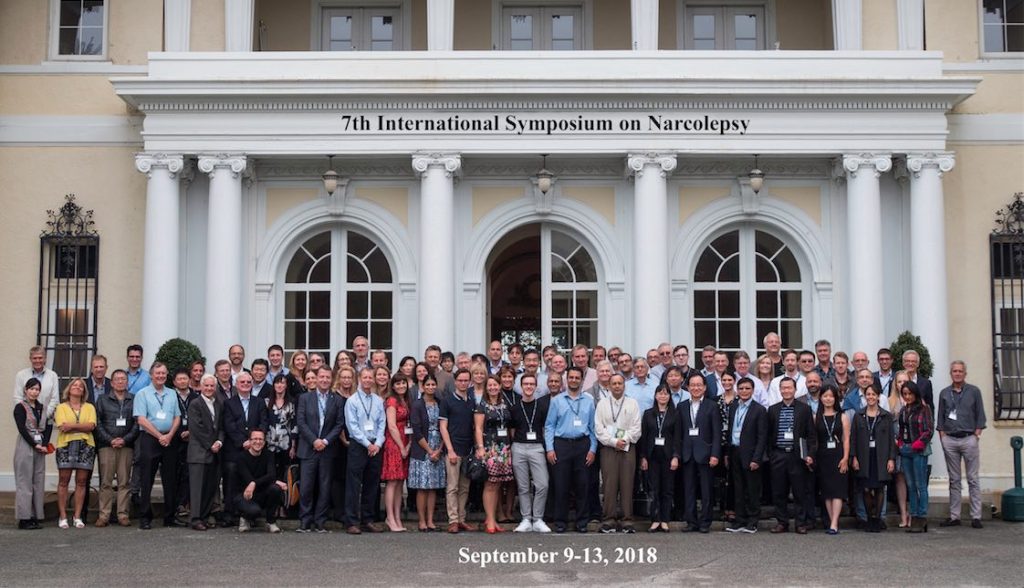
Given the incredible momentum in the research and drug development field,the 7th International Symposium on Narcolepsy in September 2018 was an incredibly timely meeting to foster important discussion and collaboration. Over a hundred world-leading researchers, clinicians came together, along with leaders of U.S.-based narcolepsy patient advocacy organizations and drug developers. I was honored to represent Project Sleep. Read more here.
6. 17 members of congress support narcolepsy research
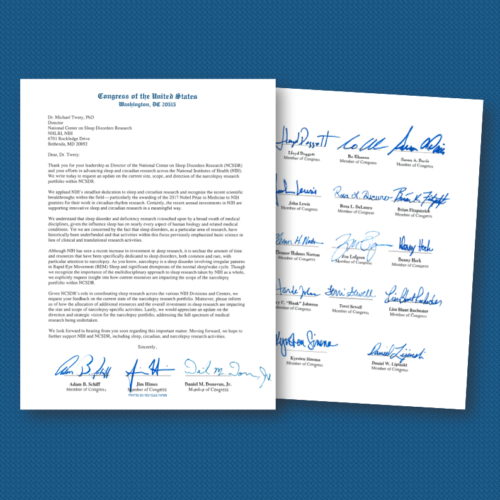
While we are entering an era of unprecedented opportunity in narcolepsy research, there has been a problematic decline in federal funding for narcolepsy research over the past decade. To help combat this urgent issue, advocates across the country rallied together in February 2018 to secure 17 members of congress as co-signers on a narcolepsy research letter to NIH. This level of congressional support is unprecedented in narcolepsy advocacy! Subsequently, NIH replied to Congress. See both letters and Project Sleep’s analysis here.
Watch this space! Without sufficient federal funding, important next steps in narcolepsy research will be stalled or worse, abandoned. We must continue to raise our voices to ensure that our urgency is not overlooked. Sign up for Project Sleep’s e-updates to participate in upcoming advocacy efforts.
Here’s to another amazing year ahead!
 |
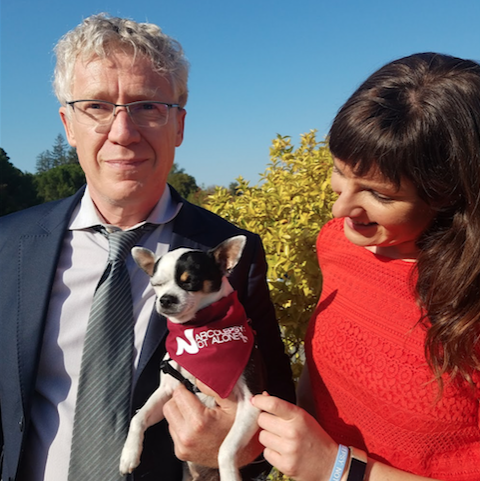 |
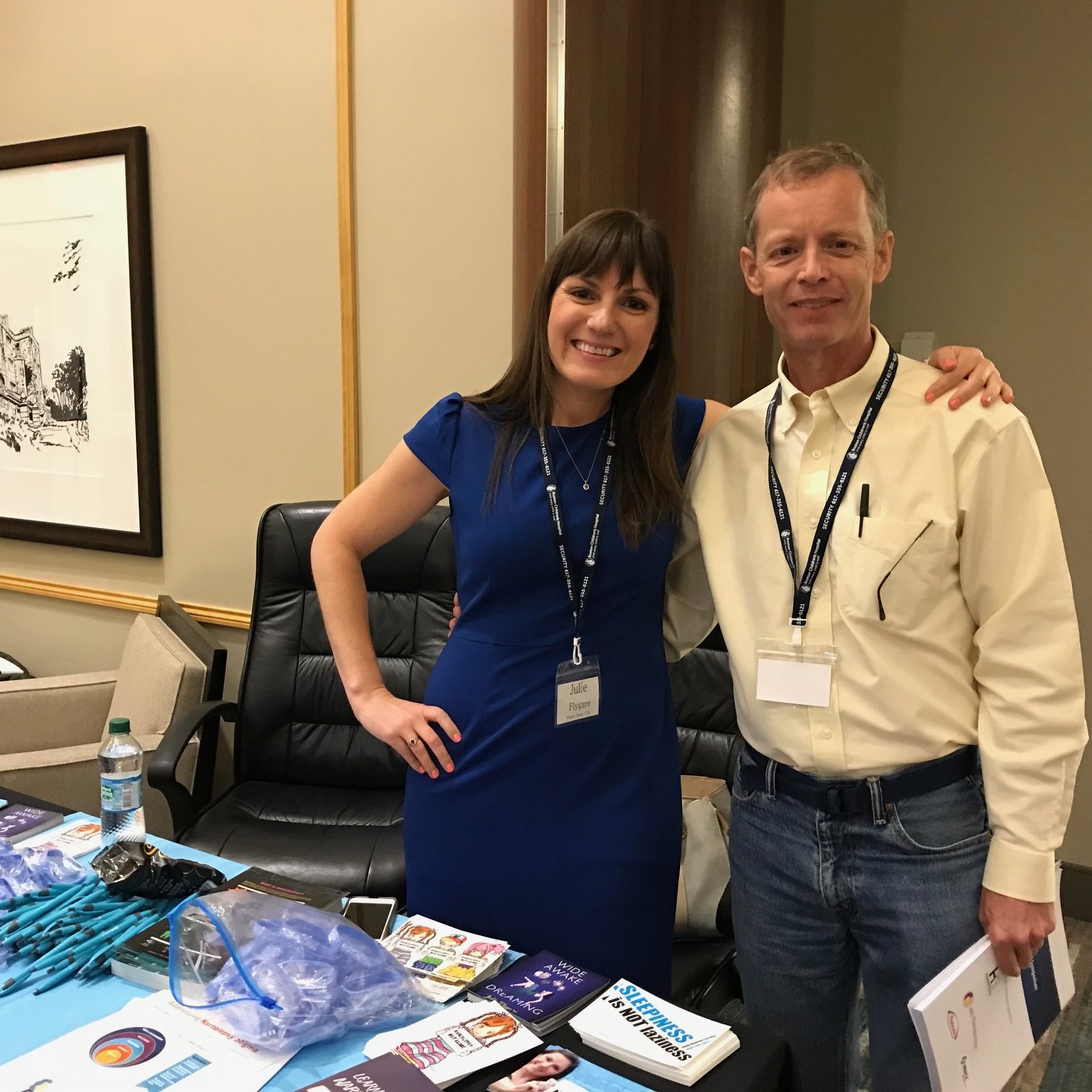 |
In closing, special thanks to the incredible narcolepsy and IH research community. I cherished the time I spent with our leading scientists and clinicians in 2018. I witnessed their passion and compassion first-hand and I’m forever grateful for their kindness and support of Project Sleep’s efforts. Together, I believe we are building a brighter future and I’m forever grateful.
See my 2018 Recap for additional narcolepsy awareness and advocacy highlights!
Great update Julie. It gives many of us hope to read that promising Narcolepsy research is underway. Thank you for giving us a voice and fighting the good fight!
Julie, your advocacy is commendable. I have been dealing with narcolepsy/cataplexy for over 58 years. I am now 70. Typical of that time, I saw a litany of doctors and went for about 15 years without help. Many neurologists have no clue about our disorder. Lucky for me, I am married to a wonderful and understanding man who sent me the link to your blog. I am heartened by the work you are doing. Keep it up!